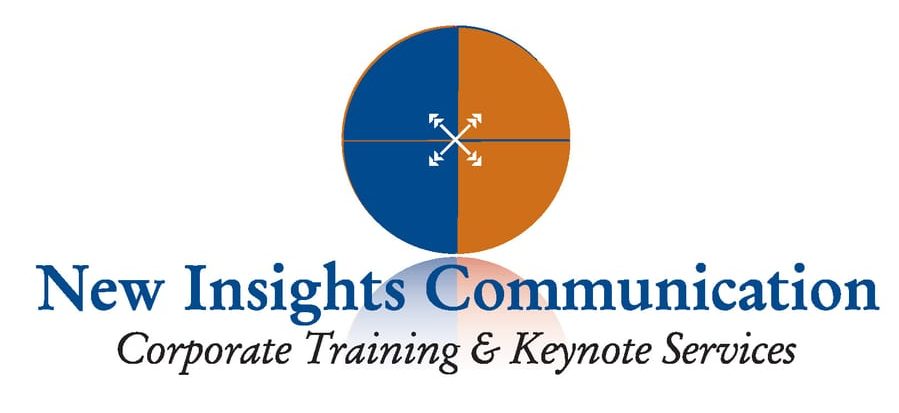Introverts who are Empathizer communicators have a clear advantage. When talking to extroverted people, introverts intuit, see, hear, picture, and present solutions to prevent problems. My proof: I recently spoke on the topic of “Effective Leadership Communication” to 55 CPAs from across the state at the Ohio Accounting Show in the Dayton Convention Center. Forty of these corporate and public accountants were introverts who are Empathizer communicators. Why does it matter?
INTROVERTS’ TALK TIPS: HOW TO THINK AND ACT LIKE AN EXTROVERT USING THE TALK TO ME SYSTEM
Introverts are often misperceived as cold, shy, aloof, stuck up, distant, or too into themselves, when nothing could be further from the truth. The intuitive and inventive Empathizer introvert participants in my session, brainstormed to come up with suggestions to help others communicate more confidently, easily, and openly, by becoming more outgoing:
1. WANDER AROUND. You have to leave your cubicle or office and go out and talk to people all around you to become aware of what the mood of the office happens to be or what special projects are underway.
2. SMILE BIG. You should smile big when you’re talking with people, sending the message, “I’m genuinely glad we have a chance to talk.”
3. EXTEND YOURSELF TO NEWCOMERS. Make it a point to ask a stranger, or the person seated next to you, “How’s it going for you today?”
4. TALK CONFIDENTLY TO BE PERCEIVED COMPETENTLY. Practice so you can sound as confident as you are capable, in your abilities to speak openly and confidently about all kinds of fun and serious stuff, and your co-communicators will follow suit.
5. ASK DIRECTIVE QUESTIONS. Learn to ask directive questions like: “What brings you here?” “What do you like about your work?” “What interesting project are you working on?” “How did you get started in your line of work?” Such conversations can sometimes lead to unanticipated results!
6. MAKE A PHONE CALL INSTEAD OF WRITING AN E-MAIL. Make your communication efforts pay big dividends by contacting someone personally instead of shooting off an email. If no one is available to take your call, leave a voice mail…an upbeat message that boosts the mood of the person on the other end of the line!
7. REACH OUT AND WRITE A PERSONALIZED CARD. Take the time to scribble a brief note of thanks or of positive regards, the kind of note that makes your day less gray. Who knows — the recipient of the message just may reciprocate in some unexpected positive way!
8. BE A DUMMY. Never be a know-it-all. Keep your mind open to learning something new at every turn on the two-way communicator highway, just as T.V. icon Fred Sanford had a way of doing.
9. READ A LITTLE. Invest just four minutes daily in bettering your skill level and your mood by learning new communication tools at www.drogrady.com.
THE INTROVERT ADVANTAGE
If you are an introvert, you are at a distinct advantage. You know the answers to almost every problem riddle, business and personal…and if you don’t, you’re very likely to make the effort to find out! Whenever an Empathizer introvert (or extrovert) gives me advice, I typically implement the advice because I know my accounting ledger will post huge profits.
My workshop audiences are a fun place to be if you love to solve a problem puzzle and adopt the strengths of your opposing communicator type. Today’s CPA group had a blast, which certainly gave me a needed boost!
THE OHIO ACCOUNTING SHOW, EFFECTIVE LEADERSHIP COMMUNICATION, DENNIS E. O’GRADY, PSY.D., NEW INSIGHTS COMMUNICATION
Communication exchanges are the heart of all relationships, business and personal. How they are managed directly impacts an individual’s success as well as a company’s performance. O’Grady will help you assess your communication type–Empathizer or Instigator–as well as help you determine how to work with those of the same or opposite communication type.
From the Ohio Society of CPAs Program Guide for the May 23-24, 2007 Ohio Accounting Show. Special thanks to Jane Lee, Manager, Education & Training, The Ohio Society of CPAS at jlee@ohio-cpa.com or www.ohioscpa.com. CPAs…Making sense of a changing and complex world. Also special thanks to Dr. Hans Sprohge, CPA, Professor of Business, Wright State University.
